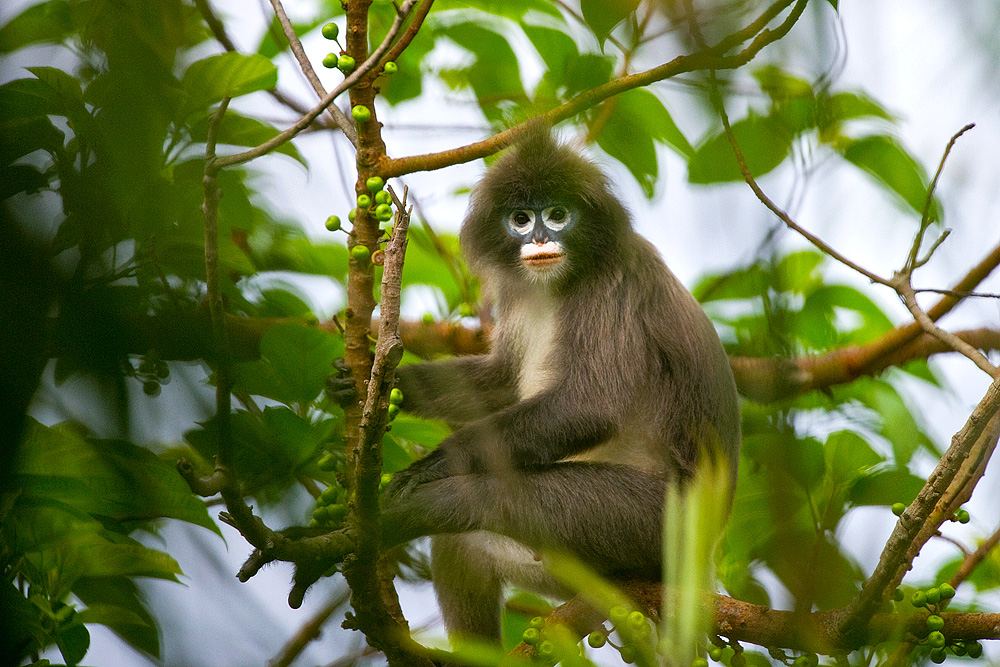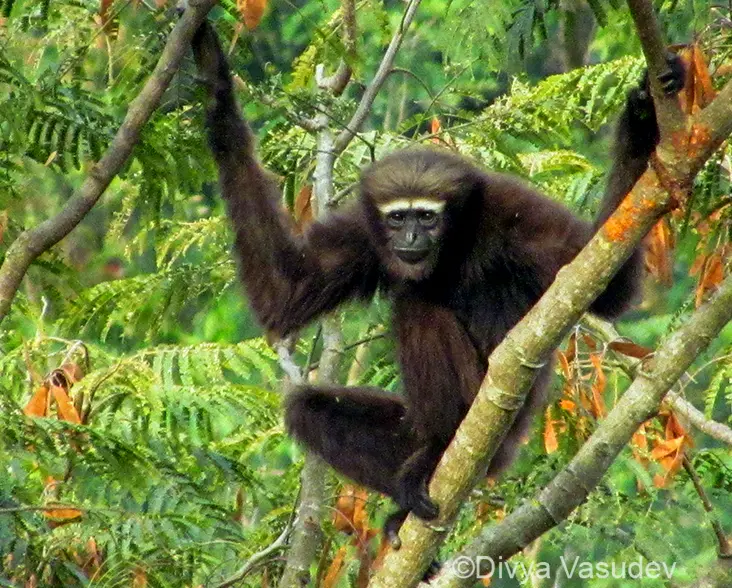Important Facts For Prelims
Primates in Peril
- 02 Jun 2025
- 6 min read
Why in News?
A recent report titled Primates in Peril highlights the increasing risks faced by 25 primate species from across the globe.
- Out of 25 primates, 6 species belong to Africa, 4 species from Madagascar, 9 species from Asia, and 6 species from South America (Neotropics)
What are the Key Primate Species Identified in the Report?
- Most Endangered Primates: The Cross River Gorilla and Tapanuli Orangutan are highlighted as critically endangered in the report.
- Cross River gorillas are scattered in at least 11 groups in Cameroon and Nigeria, while the Tapanuli orangutan, the most endangered great ape, has fewer than 800 individuals.
- Both are listed as Critically Endangered by the International Union for Conservation of Nature (IUCN).
- Primate Species from India: Phayre’s Langur and the Western Hoolock Gibbon, found in Northeast India and Bangladesh, were evaluated based on risks faced by them, but ultimately excluded from the final list.
- Phayre’s Langur: This primate, known for its distinct ‘spectacled’ appearance, is primarily found in eastern Bangladesh and northeastern India, including Assam, Mizoram, and Tripura.
- Behaviour: They are arboreal (primarily live in trees), diurnal, and folivorous (primarily leaf-eating), with a preference for young leaves.
- Conservation Status: It is listed under Schedule I of the Wildlife (Protection) Act, 1972 and is listed as Endangered in IUCN Red list.
- It is found in three Protected Areas i.e., Sipahijala, Trishna, and Gumti Wildlife Sanctuaries in Tripura.
- Habitat: It prefers evergreen or semi-evergreen forests, mixed moist deciduous forests, as well as bamboo-rich areas, light woodlands, and regions near tea plantations.

- Western Hoolock Gibbon (Hoolock hoolock): It is a tailless ape found in the tropical forests of India, Bangladesh, and Myanmar, with black males having a white stripe above their eyes while females are light colored (beige, brown, grey).
- They are known for their loud, melodic duet calls, sung by male-female pairs to mark territory. Their vocal patterns are similar in both sexes.

- They are known for their loud, melodic duet calls, sung by male-female pairs to mark territory. Their vocal patterns are similar in both sexes.
- Behaviour: Gibbons are arboreal and navigate the canopy by leaping and swinging, with an omnivorous diet of plants, invertebrates, and bird eggs.
- They live in monogamous family groups, giving birth to a single offspring that stays with the mother for about two years.
- Habitat: They thrive in moist deciduous, evergreen, subtropical, and lowland forests, with a range spanning Northeast India, Bangladesh, and western/northern Myanmar.
- Conservation Status: It is listed under Schedule I of the Wildlife (Protection) Act, 1972 and is listed as Endangered in IUCN Red list.
- The Western Hoolock Gibbon, India's only ape species, is found in the Hoollongapar Gibbon Sanctuary located in Assam's Jorhat district.
- Phayre’s Langur: This primate, known for its distinct ‘spectacled’ appearance, is primarily found in eastern Bangladesh and northeastern India, including Assam, Mizoram, and Tripura.
What are the Other Key Primate Species Found in India?
- Lorises:
- Grey Slender Loris (Loris lydekkerianus): Slim, nocturnal primate with a subtle spinal stripe.
- Two subspecies: Mysore (larger, grey) and Malabar (reddish-brown, round eye patches).
- Found in Western and Eastern Ghats.
- Bengal Slow Loris (Nycticebus bengalensis): Tail-less with prominent large eyes.
- Fur varies from ash-gray to buff-yellow.
- Inhabits northeastern India, especially south of the Brahmaputra River.
- Grey Slender Loris (Loris lydekkerianus): Slim, nocturnal primate with a subtle spinal stripe.
- Langurs:
- Gee’s Golden Langur (Trachypithecus geei): Seasonal fur color changes from cream/off-white to golden-orange.
- Black face, palms, and soles with golden whiskers.
- Found in Assam between Manas and Sankosh rivers.
- Nilgiri Langur (Semnopithecus johnii): Shiny black coat with yellowish fur patches.
- Lives in Western Ghats from Kodagu to Kanyakumari Hills.
- Capped Langur (Trachypithecus pileatus): Distinctive colored “cap” on the head and long tail.
- Found across Assam, Meghalaya, Nagaland, Arunachal Pradesh, and Tripura.
- Gee’s Golden Langur (Trachypithecus geei): Seasonal fur color changes from cream/off-white to golden-orange.
- Macaques:
- Lion-tailed Macaque (Macaca silenus): Dark, glossy coat with a long gray facial mane and tufted tail.
- Native to Western Ghats forests of Karnataka, Kerala, and Tamil Nadu.
- Bonnet Macaque (Macaca radiata): Recognizable swirl or “cap” of hair on the head.
- Long tail, longer than body, common in southern India.
- Stump-tailed Macaque (Macaca arctoides): Largest Indian macaque, short tail, reddish-pink face with beard-like ruff.
- Lion-tailed Macaque (Macaca silenus): Dark, glossy coat with a long gray facial mane and tufted tail.
UPSC Civil Services Examination Previous Year Question (PYQ)
Prelims
Q. Which one of the following makes a tool with a stick to scrape insects from a hole in a tree or a log of wood? (2023)
(a) Fishing cat
(b) Orangutan
(c) Otter
(d) Sloth bear
Ans (b)






